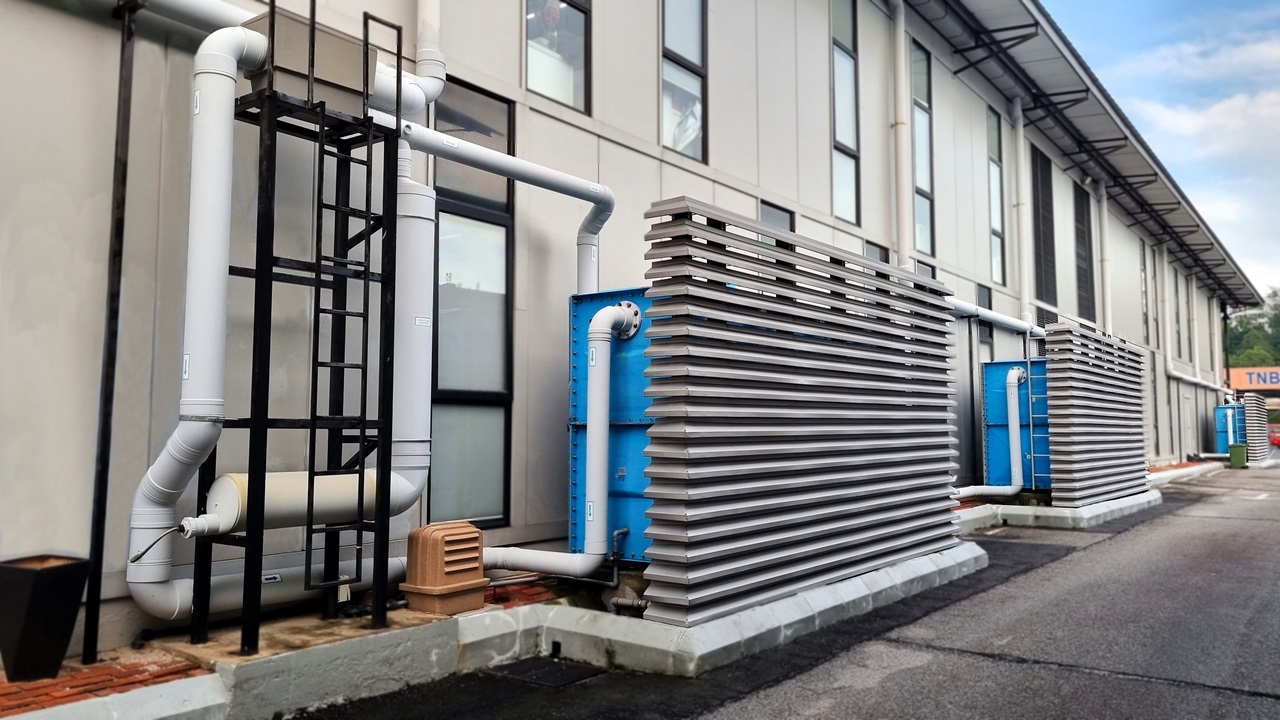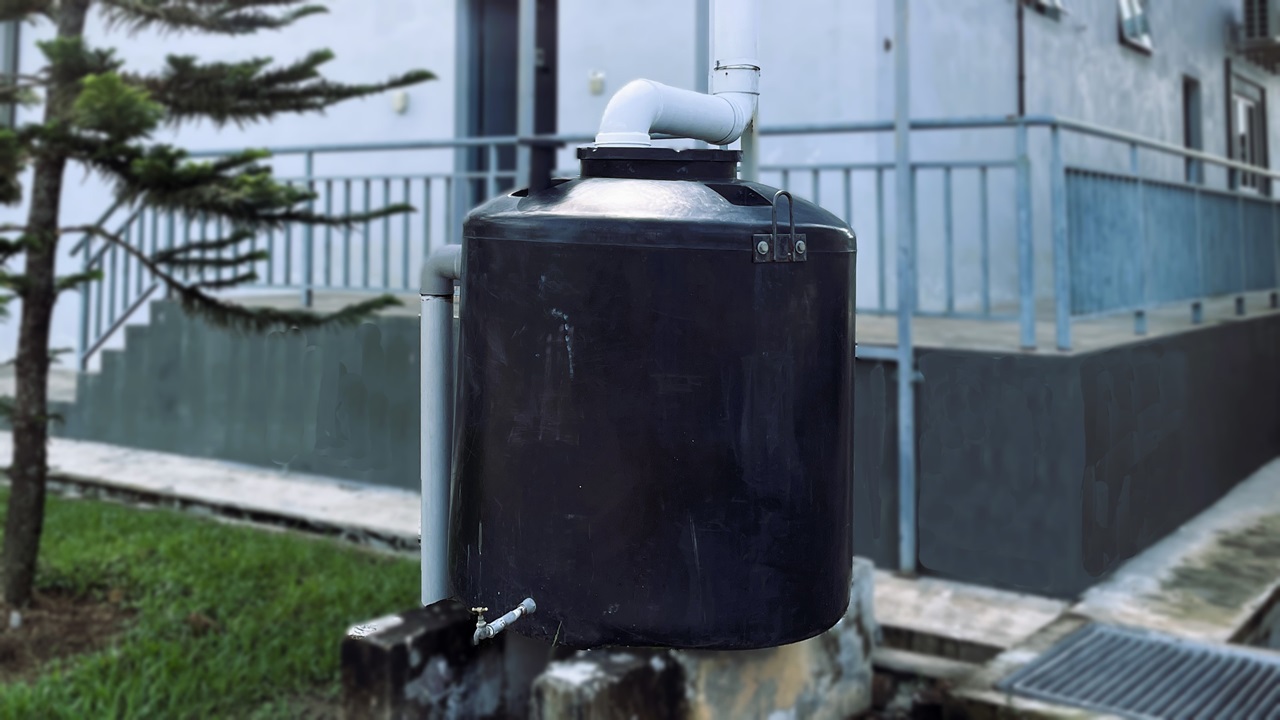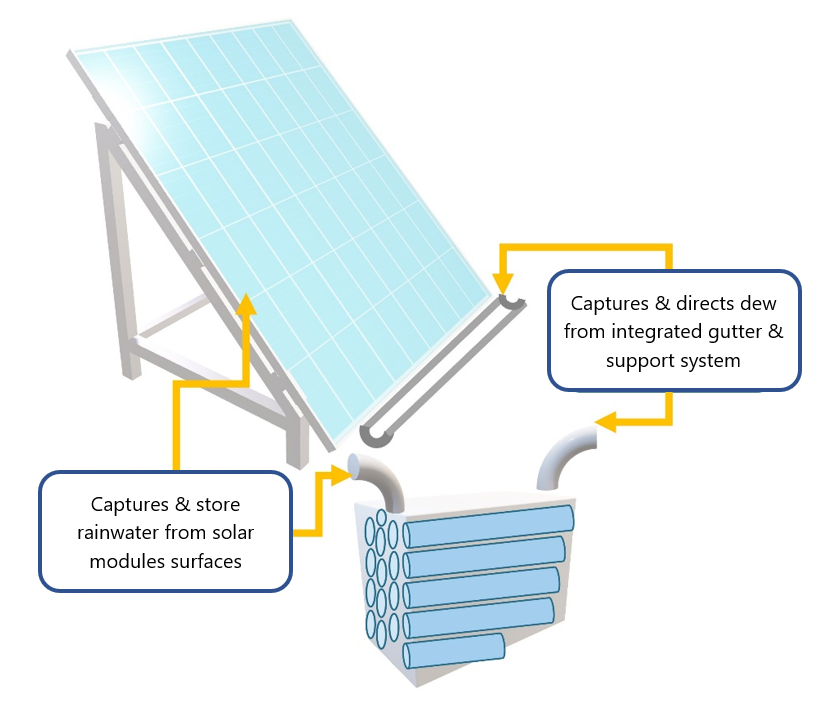Rainwater harvesting is a sustainable practice of collecting and storing rain for reuse rather than allowing the water to run off or channeled into drains, streams, or rivers. From a simple rain barrel (the tempayan is a favorite among Malaysian households) to a custom-designed system, rainwater harvesting helps to minimize reliance on municipal water supply, decrease dependence on primary water sources, and reduce surface runoff and soil erosion.
TNB is committed to optimizing the use of natural resources through effective conservation and preservation of water and has embraced rainwater harvesting as an initiative towards meeting this commitment.
Rainwater Harvesting at TNB Buildings
Rainwater harvesting systems in buildings are designed to capture and store rainwater that falls on rooftops and other surfaces for various uses. These systems are increasingly being adopted in both residential and commercial buildings for environmental and economic benefits.
TNB's buildings at Bangsar, i.e., TNB Platinum & Convention Centre, Balai Islam and Property Services Department (PSD) Office have adopted the rainwater harvesting system that serves the dual purpose of landscape irrigation and gardening. The system not only contributes to sustainable water usage but also translates into significant municipal water savings.
TNB Platinum
- Two rainwater harvesting tanks positioned at the On-Site Detention Tank accumulate rainwater from the entire site of 4 towers of TNB Platinum office, Pelitawanis, Childcare Centre, and the Leo Moggie Convention Centre. The total capacity of these tanks is 300,000 liters (each holding 150,000 liters).
- The collected rainwater is used for landscape irrigation within the site. The usage is monitored through a digital sub-meter linked to the Integrated Building System (IBM).
- As of October 23, 2023, a recorded 95,000 liters of collected rainwater has been used for landscape irrigation since the digital sub-meter was installed.
Balai Islam
- One rainwater harvesting tank positioned near the Balai Islam premise accumulates rainwater from the roof.
- The tank, with a total capacity of 2,500 liters, is facilitated by 23 pipes strategically installed around the premises.
- An average of 2,500 liters of rainwater is collected monthly, amounting to 30,000 liters annually has been used for landscape irrigation within the building parameters.
Property Services Department (PSD) Office
- Three rainwater harvesting tanks positioned near the PSD office premises accumulate rainwater from the roof.
- These tanks, with a total capacity of 6,000 liters (each holding 2,000 liters), are facilitated by 5 pipes strategically installed around the premises.
- An average of 3,550 liters of rainwater is collected monthly, amounting to 42,600 liters annually has been used for landscape irrigation within the building parameters.
On top of the rainwater harvesting system, TNB Platinum is also equipped with a key feature in water efficiency such as the usage of water-efficient fittings throughout the buildings, deployment of digital sub-metering and leak detection system for municipal water, and grey water recycling system to reduce potable water consumption even further.

Rainwater harvesting Tank at PSD Office
Rainwater Harvesting at Large Scale Solar (LSS) Power Plant
Solar power generation typically requires water for cleaning. In arid regions or areas facing water scarcity, implementing rainwater harvesting at solar plants becomes an attractive option to reduce reliance on municipal water sources and reducing operational cost.
In our pursuit of sustainable practices, we have implemented the rainwater harvesting system at the Control Building of TNB Sepang (TSS) and TNB Bukit Selambau Solar (TBSS), which currently hold capacities of 24,000 liters and 1,000 liters, respectively. The utilization of the rainwater harvesting system at TBSS is currently being reported to MUFG Bank (Malaysia) Berhad in accordance with the Equator Principle.

Rain-water harvester from TBSS’s Control Building roof
Rainwater harvesting from solar modules surface areas
Aside from the existing system at the control building, we have also initiated a trial-run of rainwater harvesting from the surface areas of solar modules at the 50MW TNB Sepang Solar (TSS) solar plant. A specific solar panel table with 2 strings solar modules, comprising 60 solar modules (30 per each string) with an estimated surface area of 120m², was selected for the trial. Over the 6-month trial period (March to August 2020), an average of 395 liters/m² of rainwater was collected.
This study, which began in year 2020, indicates a promising potential for rainwater harvesting in enhancing the sustainability of solar power plants. Considering the TSS solar plant, comprising 243,172 solar modules with a total surface area of 486,344m², there is a potential annual rainwater collection of 192 megaliters. Actual collection size shall depend on end-of-use application later.
In addition, the rainwater harvesting benefits the operation of LSS through various applications as below:
1. Reduction of ground surface run-off, thus minimizing erosion.
2. Water source for module cleaning and/or cooling.
3. As a means for fire protection to prevent fire spread.
4. Water source for an integrated agriculture-pv application.
We are currently assessing the commercial viability of the approach for implementation with an end-of-application technology to be developed, through a pilot R&D scale.

Prototype of rainwater harvesting at solar modules
In summary, TNB manages water stress by implementing efficient water use practices and investing in sustainable technologies. This involves optimizing water consumption in operations, recycling and treating wastewater, and adopting responsible sourcing practices. By addressing water stress, TNB not only contributes to environmental sustainability but also ensures the resilience of our supply chains, mitigate operational risks, and uphold our social responsibility by conserving a vital resource for communities and ecosystems.